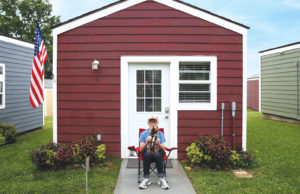MINNEAPOLIS — For years during the boom, the nation’s big
banks pushed loans — from home equity lines of credit to credit cards — like
they were selling fast food at a stadium concession stand.
Now the game is over. Families, bloated with debt, are
hunkering down and saving again. And banks are shifting gears, rolling out
aggressive new programs that cater to savers. The programs operate much like
traditional savings accounts, except they come with cash bonuses for those
willing to adhere to a certain savings discipline and keep their money tied up
for set periods.
Beginning in late December, U.S. Bancorp will offer $50 — in
the form of a Visa gift card — to customers who deposit at least $1,000 in a
special savings account, and then agree to make regular transfers to their
savings from their checking accounts each month. U.S. Bancorp customers receive
another $50 if they keep at least $1,000 in their new savings account over 12
months. Meanwhile, Wells Fargo & Co. last month rolled out a new savings
account in Minnesota that offers a cash bonus equal to 3 percent of the amount
deposited -up to $150 — provided there is a balance in the account for at least
13 months.
Meanwhile, U.S. Bancorp, Wells Fargo and a number of other
large banks are giving customers the option of automatically transferring $1
from their checking to their savings accounts each time they use their debit
cards.
The new programs are an attempt by the banks to capitalize
on the national shift toward financial austerity as families curtail their
debt-driven consumption of years past and sock away more money, just in case.
Many people who wished they had saved more while the stock market and housing
prices were still strong have now found savings religion.
“When you do a lot of focus groups with people, what
you hear is, ‘Geez, with all the money that passed through my fingers, I wish I
had saved more,’ ” said Richard Hartnack, vice chairman of consumer
banking at U.S. Bancorp. “When you’re afraid of unemployment, not having a
nest egg becomes very relevant.”
For the banks, the programs are a cheaper way to attract
billions of dollars in new deposits than raising rates. That’s because the
costs of the incentive programs are confined to those customers who enroll in
the new accounts, as opposed to hiking interest rates across-the-board for
savings accounts or CDs, says Greg McBride, a senior analyst at Bankrate.com.
The costs are confined to a smaller number of people, and the potential deposit
flows are huge, he said.
This fall, U.S. Bancorp test-piloted its new program —
dubbed “Savings Today And Rewards Tomorrow,” or START — in Seattle,
Cincinnati and Joplin, Mo., after testing it with more than a dozen focus
groups over the past year. Within six weeks, about 10,000 new customers deposited
more than $10 million in the new accounts, the bank said.
{::PAGEBREAK::}
And the programs have another benefit for the banks: They
keep customers from leaving. To get all of the perks, depositors must lock up
their money for at least a year. In the meantime, banks can sell these
customers other products, from checking accounts to mortgages, that generate
fees and other income.
“That’s the Holy Grail that the banks are after —
long-term customers that buy multiple products from the bank,” McBride
said. “The banks clearly see the rising savings rate as a way to bring
customers into the bank and keep them there.”
Even so, some financial experts argue it’s far too early to
call the recent rise in the national savings rate a long-term trend. Americans
have a history of setting aside more money in times of high unemployment, and
then returning to their free-spending ways once the job market improves.
Indeed, while the national savings rate has nearly doubled over the past year,
it has inched downward since May as the economy has shows signs of a recovery.
In September, Americans saved 3.3 percent of their personal disposable income,
down from 5.9 percent in May, according to the Federal Reserve.
Hartnack, however, is convinced that many consumers who have
never been savers can alter their habits given the right incentives and if
banks work with their customers to establish automatic transfers from their
checking accounts.
“To a large extent, particularly with people in the
bottom two-thirds of the economy, there was a reaction to savings like there
was to people stopping smoking or losing weight,” Hartnack said.
“Everyone wants to do it, but it’s very difficult to motivate you to do
it. … But the basic idea here is, let’s make this simple, and let’s make this
painless, and, lo and behold, people will save.”
Via McClatchy-Tribune News Service.














